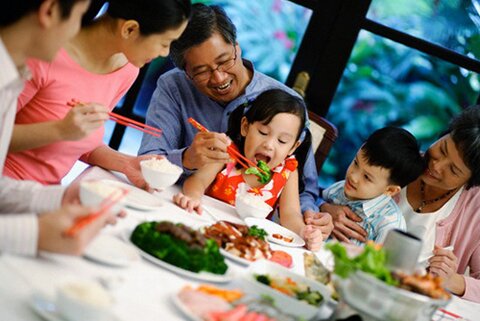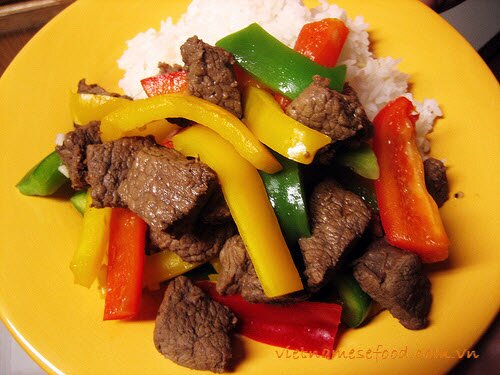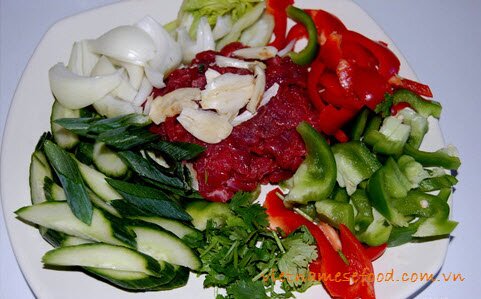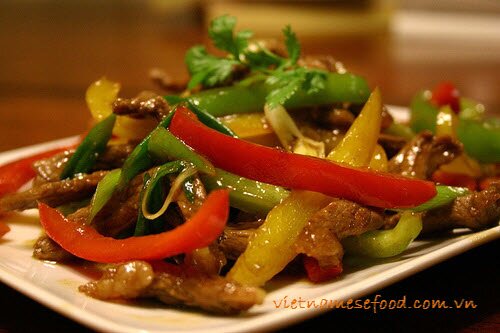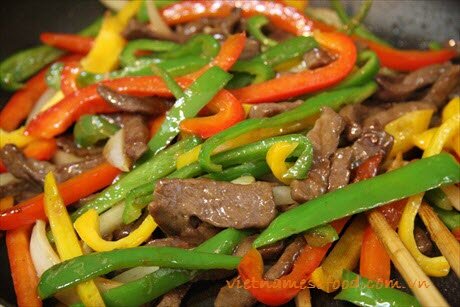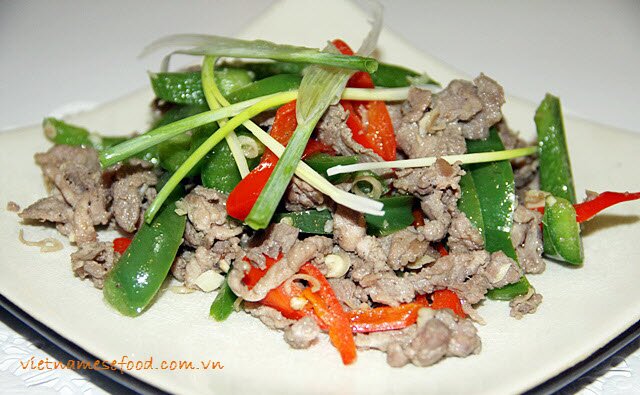I toyed with the idea of giving this post one of the typical
pun-filled pho-post titles. What the pho? All pho'c'd up. Blah blah
blah. One of those titles intended to be clever and witty while at the
same time demonstrating that the proper pronunciation of the Vietnamese
noodle soup rhymes with the first two letters of a popular English curse
word, and not with American slang for a loose woman.
Instead, I decided to do what would have been explained in a title into a full two sentences slap bang at the start of my post. Just pho you.
I've always had a thing for pho, but my interest in it took a sharp
uptick when I moved to Boston for college, an event that brought with it
two pro-pho side effects: Firstly, a close proximity to one of the
largest Vietnamese populations in the Northeast; A short ride to
Dorchester and you have yourself the pick of some of the finest noodle
shops and French-Vietnamese bakeries I've experienced outside of
Vietnam. Secondly, and more importantly, a massive increase in the
number of hangovers I experienced and the need for hot, brothy, salty,
and soothing beef noodle soup to battle them with.
A pho vendor in Hanoi
There are few things better for the soul or the body than a tangle of
slick rice noodles in a rich, crystal clear, intensely beefy broth; the
warm aroma of cinnamon, cloves, and star anise rising up in a cloud of
steam. The intensely savory-salty hint of fish sauce balanced by a
squeeze of lime juice and a handful of fresh herbs and chilies that you
add to your bowl as you eat. Perhaps gelatinous boiled beef parts are
not everyone's idea of the best hangover cure (I know for a fact that Leandra
has trouble with it when she's feeling fragile), and that's ok—the
beauty of pho is that once you've got the broth and the noodles,
everything else is totally customizable.
It was with a heavy heart that I moved back to New York a few years ago, knowing full well that while the Big Apple may be a ramen-mecca, the insipid, overly-sweetened broths that pass for pho around here leave more than a little something to be desired.
The solution? Just make huge batches of broth at home and freeze it for when the desire strikes.
Modern Vietnamese cuisine is an amalgam of of Southeast Asian
ingredients and French technique imported during the years of the French
Protectorate. The etymology of the word pho is up for debate, but most
sources seem to agree that the most likely origin is from the French
word for fire, feu. The similarities between Vietnamese pho and French pot-au-feu
are large. Both are dishes of broth made by simmering various beef
parts with aromatics in water. Both are served with the boiled beef used
for making the broth along with some vegetables. Both come with
powerful, pungent condiments to accompany the broth; In the French case
it's mustard and pickles, while in Vietnam it's herbs and chilies.
Though the most traditional Northern Vietnamese versions of the dish
are simple affairs with very few accompaniments, when the dish
eventually spread to the South, a slew of herbs, aromatics, and sauces
for diners to add to their bowls as they see fit were added. These days,
hoisin sauce, Sriracha, and lime juice are ubiquitous in both the South
and the North, and are standard in American Vietnamese communities.
But let's get back to the basics. Like all good French-style broths, pho starts with the right cuts of meat.
The Stars: Beef Parts
While versions of
pho made with chicken or even pork do exist in
Vietnam and out, the classic broth is made with and served with beef.
But which cuts are best? I boiled my way through a half dozen popular
options before mixing-and-matching to create my ideal pho blend. Here
are some cuts to consider:
Shin
Slices of the cows leg taken below the knee, shin is one of the
hardest working parts of the cow, riddled with connective tissue and a
huge eye of marrow to boot. These factors are important. Connective
tissue is made largely of collagen, a protein that breaks down into gelatin as it cook, and we all know that gelatin is what gives a good broth its rich body and mouth-coating texture.
Bone marrow is made largely of fat, but it's packed
with deep beefy flavor. Stocks made with an abundance of marrow ended up
with a slick pool of rendered beef fat on the surface that needed to
either be strained or chilled and removed, but the depth of flavor a
good amount of marrow added was undeniable.
Finally, beef shin has plenty of muscle tissue, which not only adds flavor of its own, but can be added back to the soup for serving.
If I was going to pick one single cut that balanced good flavor,
fattiness, a nice amount of meat to serve in the soup, and low cost,
shin would be it.
But we don't have to limit ourselves to one cut. Let's consider some more.
Oxtail
Oxtail shares many similar qualities with shin meat, though it has a
higher ratio of fat and connective tissue. In my local markets, it's
also a little pricier, as it's a more popular cooking cut and each cow
has only one tail. If you are a fiend for fat and cartilage and don't
mind picking bits of meat out from around the oddly-shaped oxtail is a
good substitute for shin.
Or go wild and use both.
Leg Bone
A classic base for the broth, which is, after all, derived from
French techniques designed to utilize all parts of an animal. Believe it
or not, Pho is a remarkably recent dish. The first pho restaurant was
opened in Hanoi in 1920, and the dish itself was developed only decades
before that. Until the French Protectorate, beef was rarely consumed in
Vietnam—cows were more valuable as pack animals. (You see a similar
history of beef consumption in other Asian countries, notably Japan).
French broths are made with bones not because bones make for the
absolute best broth out there, but because there's really not much else
you can do with a bone other than boil it and extract as much flavor as
possible.
So does it make sense to use leg bones in a modern context where, at
least in this country, other cuts of beef are relatively inexpensive to
begin with?
It all depends on your priorities. Certainly a cut like shin or
oxtail offers better flavor in a more compact package, so when I'm
making a small batch of pho, I'll skip the bones. But the fact remains
that beef bones are still very cheap here, which makes them a good choice for large batches of soup which can quickly get costly.
Chuck
More readily available than any of the first three cuts, chuck makes
for a beefy and intense broth with plenty of fat and connective tissue
for body. The problem is the amount of cooked meat you end up with. For
some folks, a big bowl of broth packed with large chunks or shreds of
beef might be ideal, but I end up getting meat overload. I like to
include a small bit of chuck in my mix for the variety it offers, but
only a small bit.
Brisket
Brisket is packed with flavor, but it has a profile that is brighter
and more liver-y than the deeper, richer flavor of chuck. A broth made
with brisket alone proved to be watery and thin. Simmered brisket,
sliced and served on top of the noodles, however, is a treat. I like to
include a piece of brisket in my mix as well.
Flank
Like brisket, flank doesn't add much to the broth itself. Unlike
brisket, it's not particularly pleasant to eat when long-simmered. I
find it lean, dry, and stringy (though I know some folks who love it). I
prefer to leave the flank out of the soup and save it for shaving into
thin raw slices to poach gently in the hot broth as the dish is served.
After tasting all of the individual single-malt (as it were) broths, I
landed on a mix of 3 parts (by weight) shin to 2 parts oxtail for the
base flavor of the broth, along with 1 part each of chuck and brisket,
which gives you plenty of meat and gelatinous connective tissue to chop
and serve with the dish.
Seeking Clarity
One of the prerequisites for top-notch pho is that, like a French
consommé, the broth should be crystal clear when you are finished with
it. So what causes a broth to cloud up? Two things: dissolved proteins and minerals extracted from the meat and bones, and emulsified fat.
There are a number of ways to deal with these impurities. I first
tried using the traditional French consommé method—straining the
finished broth through a fine mesh strainer or chinois, then
re-simmering it along with ground meat and vegetables mixed with beaten
egg whites. As the broth cooks, the egg whites form a matrix of
coagulated proteins that trap the ground meat and vegetables, forming a
thick "raft" that floats on the top of the stock. As the stock slowly
simmers, it bubbles over the top of that raft and filters down through
this network of proteins. Any impurities and dissolved solids get
trapped in the fine mesh, leaving a clear soup below.
The method works, but it's also a pain in the cul.
Much easier is to use the par-boil method.
You'll notice that when you begin making a stock, all sorts of scum
and detritus rises up to through the water within the first 15 to 20
minutes of cooking. It's this gunk that's largely responsible for
cloudy, murky, dark broths, and to top it off, it's not particularly
flavorful. By boiling your meat for 15 minutes, dumping out the water,
scrubbing the coagulated proteins from the outside of the parts, and
starting a fresh broth, you save yourself 90% of the careful skimming
and clarifying work you'd have to do otherwise.
With this method and my beef blend, I had a broth that was crystal clear, yet deeply colored and flavorful. Time to move on.
Aromatics
The aromatics in pho are relatively straight forward. The major
element—the one that gives pho shops their distinctive aroma—is in the
spices.
The Spices
Cinnamon, cloves, fennel, and star anise are common, with cardamom
and coriander often making a guest appearance. I personally find the
cardamom and coriander a bit to overwhelming, masking the beefy flavor
that I've worked hard to achieve, so I leave them out.
The key to good spice aroma is to get yourself some good, fresh spices. Despite the fact that they're dried, spices do
lose flavor and aroma over time. Think of a cinnamon stick as a small
bottle of perfume. Every time you open up that jar and get a whiff, it's
like spraying a bit of that perfume in the air. Eventually, the bottle
runs dry, and you're left with insipid spices.
I know more than one home cook who is guilty of having a jar of
12-year-old paprika in their spice cabinet. Come on guys, raise your
hands. We'll help you work through it.
And never settle for those pre-packaged pho spice blends.
Who knows how old those spices are? It's just as easy to make your own
spice blend, which offers the advantage of being able to custom-design
it to suit your own tastes.
In the interest of completeness, I made broths using both whole
spices and ground spices. I do not recommend using ground spices, unless
you want to be sipping on cloudy, gritty soup.
Onions and Ginger
The only other elements in a pho broth are onions and ginger—deeply charred
onions and ginger, that is. It not only adds an appealing smokiness and
complexity to the broth, but the onions also begin to cook, adding a
sweetness that's essential to a well-balanced soup.
Traditionally, they'd be charred over a grill or directly in the
embers of a fire. I don't have that luxury at home*, so an alternative
method is necessary.
*though it might be a good idea to char a few onions and
ginger knobs next time you light up the grill and save them for your
next batch of pho!
Many recipes recommend broiling them until they char. What you end up with is this:
Onions that are only mildly charred and ginger that is more shriveled
and dried than blackened. It doesn't make for terrible soup, and if
it's your only option, it'll do you fine, but there's a better way if
you have a gas burner:
Charring them directly over the flame results in deeply blackened
vegetables that still retain all their moisture and flavor. You can use a
pair of tongs to hold each one over the flame, but it's a slow process.
I just use a wire cooling rack set directly over the burner (I'm not
kind to my cooling racks)
When split, you should be able to see the layer of blackened skin on
the exterior, followed by a few layers of sweet, translucent,
semi-cooked onion, followed by a raw core. All these various levels of
cooking make for a more complex finished broth.
Now all you need is to simmer, simmer, simmer away, making sure to
remove the brisket and chuck about an hour and a half into cooking to
prevent them from becoming too stringy. I found that for optimum flavor,
a boil time of at last 5 hours produced the best flavor. You can go as
long as a day (and some recipes call for it!), but I found very little
change after those initial five hours.
The broth traditionally gets finished off with a shot of salty fish
sauce, and a hunk of yellow rock sugar (you can find this in most Asian
grocers, sometimes sold as rock candy).
Ready to Serve
Like Halloween or a good bondage party, half the fun with pho is in
dressing it up. Rather than serving the pre-made bowls of soup you get
in restaurants, I like to serve bowls of plain noodles and broth,
letting diners pick and choose exactly what to put into it.
If you've done everything according to directions up to now, you should have some or all of the following:
See all the different textures? Chewy and gelatinous, moist and
tender, slick and raw, oozy, beefy, what have you. This is what makes
you go back bite after bite. If you're really in the mood to stir up
trouble, you can add a handful of ribbon tripe to the simmering broth.
Its crunchy, chewy, papillated* texture is not for everyone, but then
again neither is being awesome.
*I looked up this word to double check that it was indeed a
real word and got this: "From papilla: A small nipplelike projection."
Which would make Yuba the most papillated dog I know.
Most Vietnamese restaurants will serve both hoisin and sriracha on
the side to squirt into your pho, but I've never been a fan of either—my
working theory is that they started out as a way to add a much-needed
jolt of flavor to a poorly-constructed broth, which is definitely not
what we've got here. Then again, I'm not the kind of guy to stop
adulterators from adulterating.
Moral of the story: put the stuff out, but make sure that your guests taste the broth that you've worked so damn hard on before they go and mess it up with that rooster sauce.
Put it all together, and boom:
Pho-king phabulous. (Sorry for that).
According to Seriousseats!


